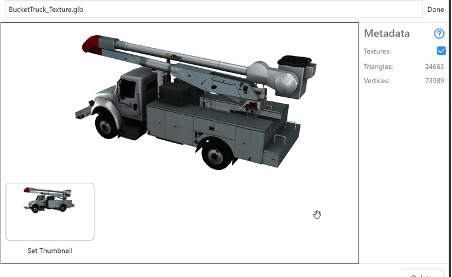The image most often associated with augmented reality(AR) is one of a singular technician wearing some form of head mounted display. That image drives the assumption that most augmented reality software requires each technician to have access to a head mounted display and that the software primarily or only supports step-by-step guidance. This also leads those interested in the technology to assume a rather high cost to adoption, significant investment in training the workforce to use new software and upgrading information technology infrastructure. Further, they may struggle to envision a return on investment and delay their investment in augmented reality for maintenance training. However, instructor led training is not only available, it is a cost effective use case for getting your firm started with augmented reality.
What is Augmented Reality
Augmented reality provides a digital overlay of information or visuals on the real world. This information can be videos, instructional text or images similar to presentation slides or animated 3D cad files often referred to as holograms. The user typically wears a headset with a visor that they can see through , unlike virtual reality that immerses the user in a complete virtual world. Using AR a technician can use the digital information to complete their work, a trainee can utilize guided digital instruction as they learn or an instructor references that digital content to educate trainees. It is this latter use case that has a low barrier to adoption but can make the largest impact on your entire organization with a lower initial investment.
Improving remote maintenance training
Live, hands on training is usually limited to 16 or less trainees because of limited access to equipment. In some classes they fight to get a vantage point to see the instructor perform a task. Common video conferencing tools may increase the number of trainees but are hard to integrate with webcams to provide good vantage points to remote learners. First person cameras are also hard to integrate with web based video conferencing tools, often requiring high bandwidth in addition to now having the benefit of the digital content overlays.
Using augmented reality for instructor-led training provides the benefit of live streaming first person perspective training to a large , remote audience with the ability to use 3D digital content as a reference. Imagine your firm has experienced setbacks related to continuous brake services in addition to high part costs due to suspected early part replacement. You choose a lesson focused on brake inspection to inform good decision making. An instructor dons a head mounted display and streams live to multiple remote technicians watching from a web accessible personal computer, laptop or tough book like device. During the course of explaining how to inspect a rotor for cracks or grooves, they look at a set of 3D holograms of rotors, each showing an example of wear. Each one selected to demonstrate wear that is either normal with life remaining or abnormal needing replacement. Unlike a 2D image that is often just a line drawing from a pdf document, the instructor is able to show realistic looking grooves and wear, walk around the hologram to show different perspectives, and manipulate its size to focus attention. The whole time the instructor is able to reference an actual brake either on equipment or on a training stand to compare and contrast. There is no e-learning, video conferencing or slide presentation solution that gives you this level of flexibility while also introducing a valuable next generation technology to your workforce at a low barrier to entry.
Low Entry barrier = higher ROI
Why is the barrier to entry low? To get started the only person who requires a headset is the instructor. The instructor is also the only one who must train to use the headset and augmented reality software. Augmented reality software is often very easy to use requiring no special skills so the time invested in training the instructor is as low as adopting any other solution. Technicians join the instructor led sessions no differently than they would a typical video conferencing or webinar session do they have no added requirement over existing training methods but they do get the benefit of better training content and compared to live hands on training their view is not impeded by other technicians. Finally, depending on the software chosen, your instructors can reach many facilities and therefore technicians at the same time.
Instructor led Augmented reality training reaches more technicians per unit time with more effective content compare to current training solutions. The barrier to adoption is much lower than the assumed one device per trainee model and you can impact your entire organization rapidly without a significant time or financial investment relative to what most assume.
Developed by Design Interactive, XRMentor™ is an instructor-led and self-guided training solution enhanced by augmented reality.



